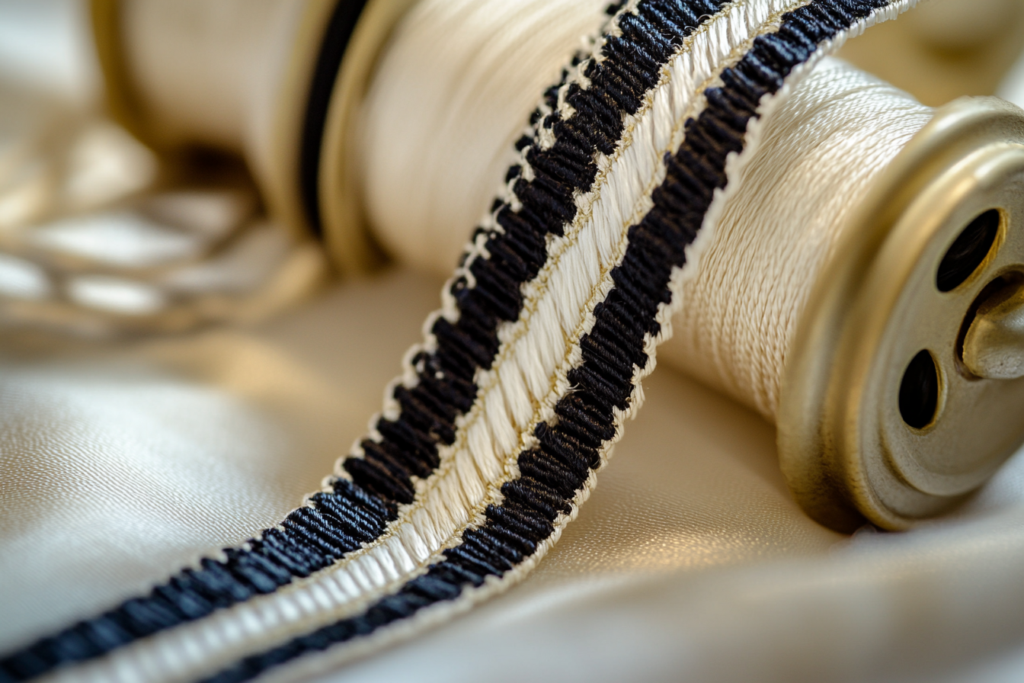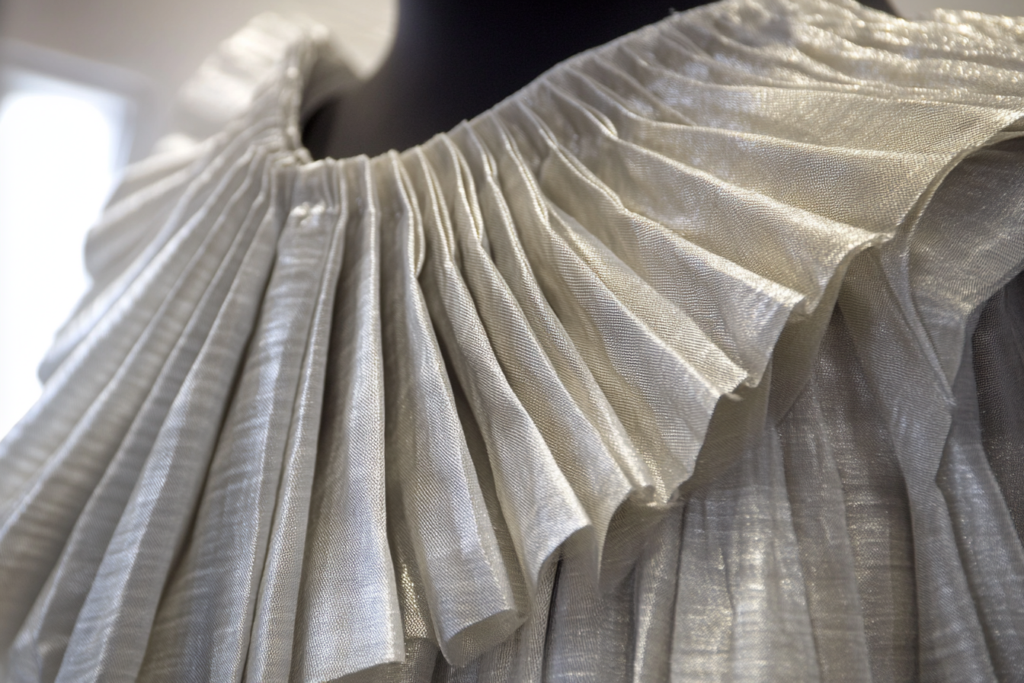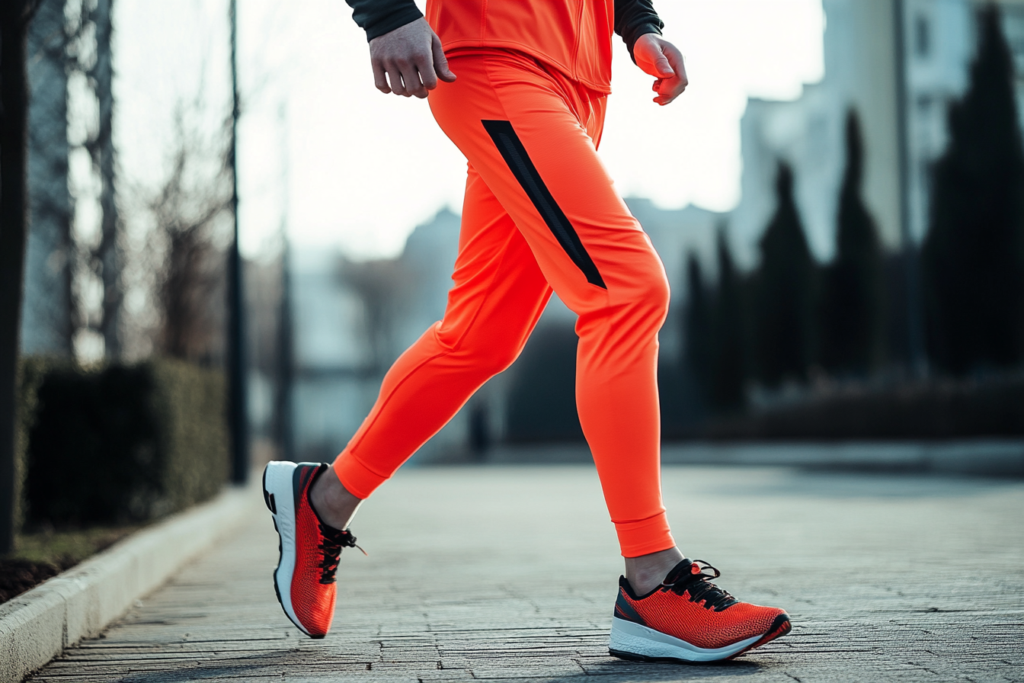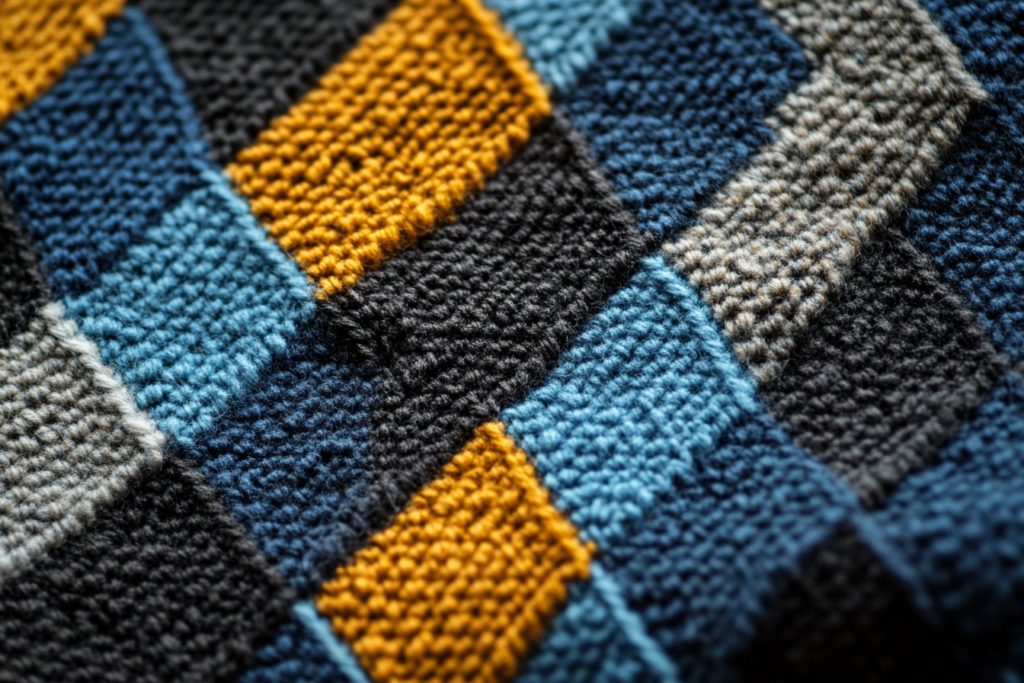Introduction: What is Braid in Fashion?
In fashion and garment construction, braid refers to a strip of cloth that is often reinforced with bias wire. This strip is typically used to add structure, shape, and support to areas of a garment that feature large curves or need extra reinforcement. The bias wire sewn into the braid helps the material bend and hold its shape, which is crucial for designing garments with contoured or curved elements.
Braid is commonly used in areas like collars, cuffs, waistbands, and any part of a garment where maintaining a specific shape or structure is important. In this article, we will explore the uses, benefits, and types of braids, as well as how they enhance garment design.
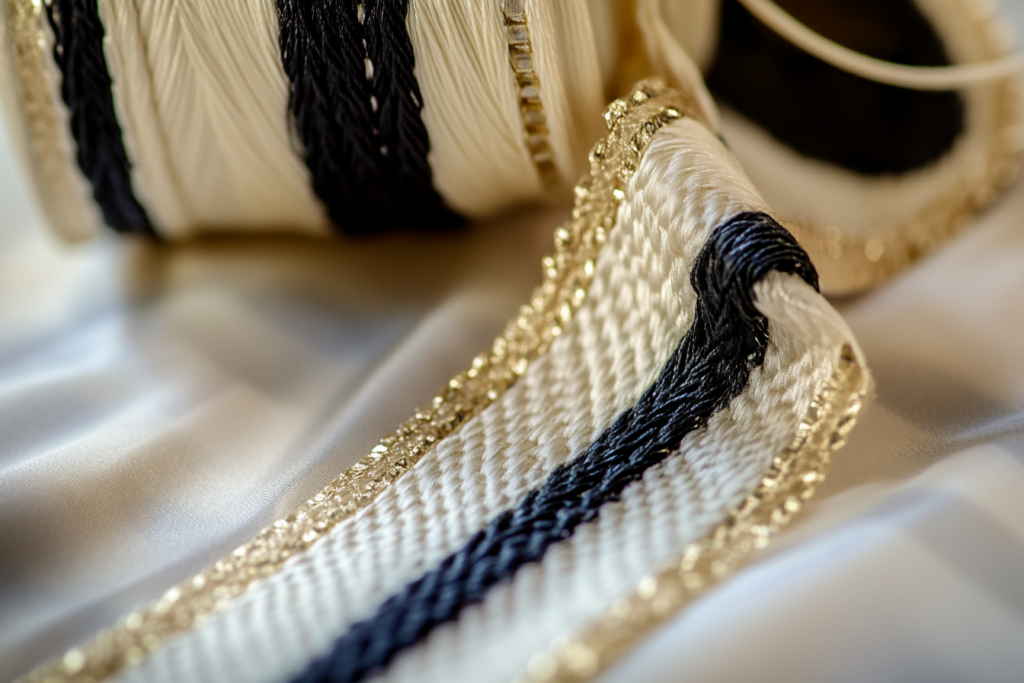
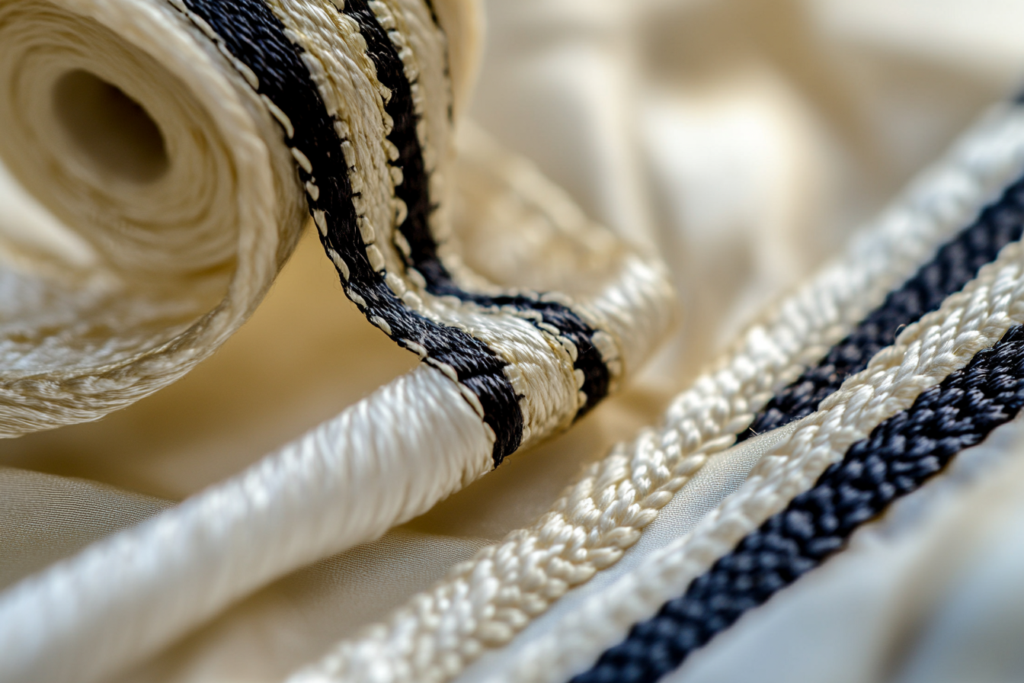
How is Braid Used in Fashion Design?
Braid is a versatile material in the fashion world, known for its flexibility and ability to adapt to the shape of the garment. Here’s how it is typically used in fashion design:
- Shaping Curves:
- One of the primary uses of braid is to help shape areas with large curves, such as collars, bustlines, and waistlines. The strip of cloth, often woven with bias wire, helps the garment maintain its shape without sagging or losing form.
- Reinforcement:
- Braid is often used as a reinforcing material in areas that experience frequent wear or stress, such as hems, seams, and the edges of sleeves. The wire integrated into the braid adds durability and ensures that the garment keeps its structural integrity.
- Design Detail:
- Beyond functionality, braid also serves as an aesthetic element. It can be used as a decorative trim along the edges of garments, adding a polished, finished look to the design. The braided material can be integrated into both formal and casual garments to enhance the overall style.
Why is Braid Important in Garment Construction?
Braid plays an essential role in fashion design for several reasons:
- Maintains Structure:
- Braid helps maintain the shape of garments, particularly in areas with complex curves. The bias wire inside the braid ensures that the fabric does not lose its form, providing a clean, well-defined shape that enhances the overall appearance of the garment.
- Supports Curved Seams:
- Large curved areas, such as those found in dresses with full skirts or tailored jackets with rounded collars, often require extra support. Braid is especially useful for providing this support, helping to smooth and reinforce the garment’s structure while maintaining its aesthetic appeal.
- Flexibility and Durability:
- The combination of fabric and wire in braid allows it to bend and flex without losing strength. This makes it ideal for use in garments that need to maintain their shape through movement and wear.
- Adds Polished Finish:
- Besides providing structural integrity, braid can be used to add a finished, polished detail to a garment. It’s often used along the edges of seams, collars, or sleeves to create a neat and refined look, elevating the overall design of the piece.
Types of Braid in Fashion Design
There are several types of braids used in garment construction, each serving a specific purpose depending on the desired result. Below are some of the most common types:
- Bias Braid:
- Bias braid is made from fabric cut on the bias (diagonal) of the cloth, which gives it more stretch and flexibility. This type of braid is commonly used in garments with curved seams because it can easily conform to the shape of the fabric.
- Corded Braid:
- Corded braid incorporates a thicker cord or wire into the braid, which adds extra rigidity and structure to the garment. This type of braid is commonly used in areas where extra reinforcement is needed, such as waistbands or collar edges.
- Decorative Braid:
- Decorative braids are often used as ornamental trims. These braids may not have wire or reinforcement but are added to enhance the overall visual appeal of the garment. They can be used on hems, necklines, or as a trim on outerwear.
- Elastic Braid:
- Elastic braid is used in areas of the garment where stretch is needed, such as waistbands or cuffs. This braid has an elastic component woven into it, allowing the fabric to stretch and provide a comfortable fit.
Benefits of Using Braid in Fashion
- Enhanced Fit and Comfort:
- The use of braid helps ensure a better fit, especially in areas where the garment needs to conform to the body’s curves. This is particularly important for fitted garments, where maintaining the right shape and structure is key to comfort and wearability.
- Improved Durability:
- The integration of bias wire into braid enhances the durability of the fabric in high-stress areas. The braid helps prevent stretching or sagging, allowing garments to hold their shape over time.
- Versatility in Design:
- Braid can be used in a variety of garment styles, from formal dresses and jackets to casual wear and activewear. Its versatility allows it to be incorporated into numerous fashion designs, providing both functional and decorative benefits.
- Aesthetic Appeal:
- Braids add a refined and polished touch to garments, creating a clean, structured appearance. They are especially useful in high-end fashion where attention to detail is critical.
How to Use Braid in Your Garment Designs
If you are a designer or DIY fashion enthusiast looking to incorporate braid into your own creations, here are some tips:
- Choose the Right Type of Braid:
- Depending on your project, select the appropriate type of braid. For curved seams, bias braid will offer the flexibility you need, while a corded braid will add more structure.
- Carefully Incorporate Braid into Seams:
- Braid works best when sewn into seams or edges that require structure. Make sure the braid is securely fastened so that it can provide the necessary support without causing discomfort.
- Use Braid as a Decorative Element:
- Consider using braid as a decorative trim along the edges of a garment, such as on cuffs, collars, or even in the middle of a pattern. A well-placed braid can add visual interest and sophistication to your design.
- Ensure Proper Fit:
- When using braid for shaping, make sure that it is carefully positioned to conform to the garment’s curves. This will ensure that the garment maintains its shape and offers both aesthetic appeal and comfort.
Conclusion: The Role of Braid in Fashion Design
Braid, with its bias wire reinforcement, is an indispensable tool in fashion design. Whether used to shape and support areas with large curves or as a decorative detail, braid adds both function and style to garments. By understanding its uses and benefits, designers can create garments that are not only beautiful but also well-constructed, offering a polished and durable finish.
Whether you’re designing a formal garment or a casual piece, braid provides the structural integrity and aesthetic refinement needed to take your designs to the next level.
